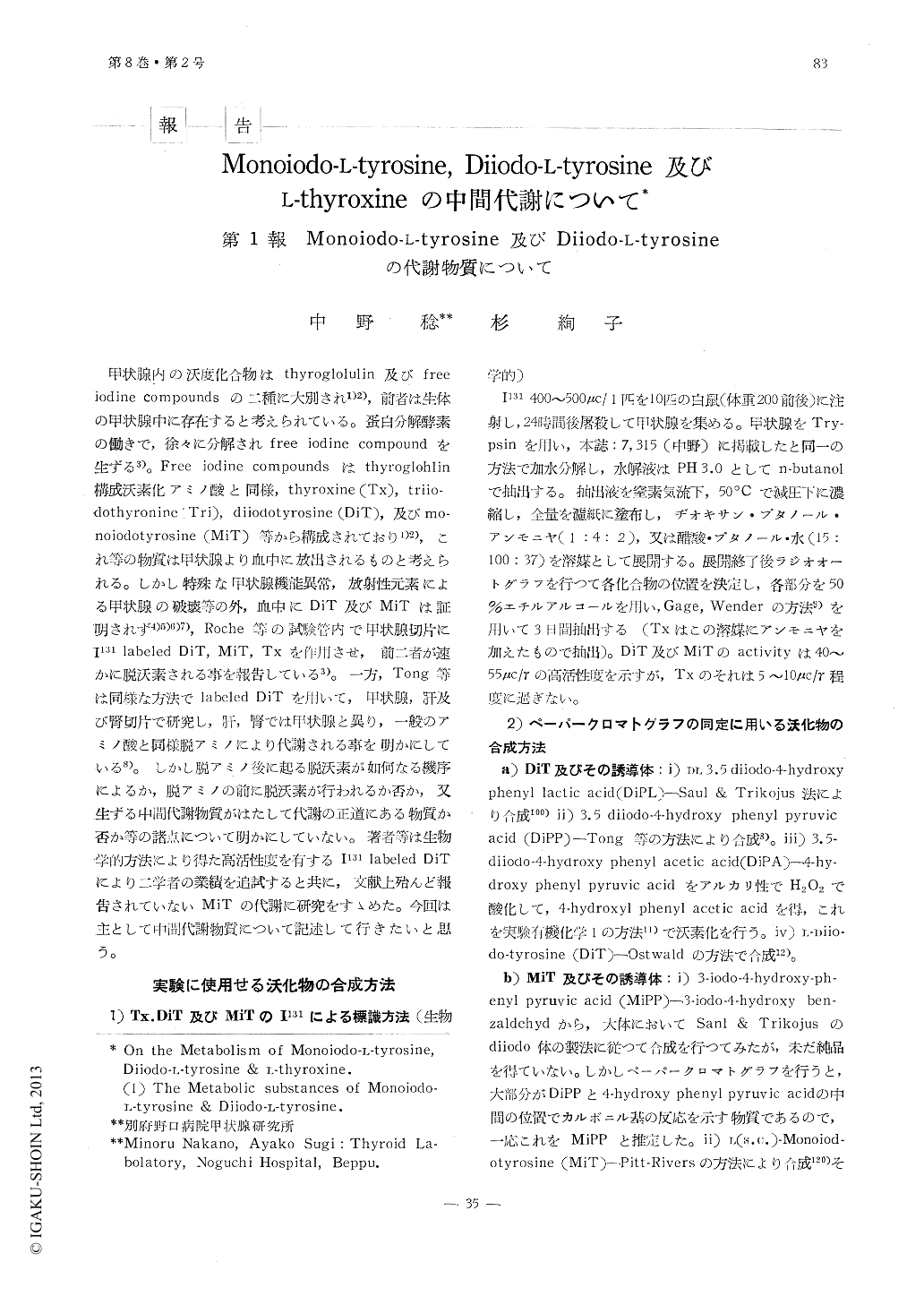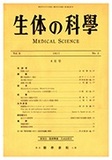Japanese
English
- 有料閲覧
- Abstract 文献概要
- 1ページ目 Look Inside
甲状腺内の沃度化合物はthyroglolulin及びfreeiodine compoundsの二種に大別され1)2),前者は生体の甲状腺中に存在すると考えられている。蛋白分解酵素の働きで,徐々に分解されfree iodine compoundを生ずる3)。Free iodine compoundsはthyroglohlin構成沃素化アミノ酸と同様,thyroxine(Tx),triiodothyronine(Tri),diiodotyrosine(DiT),及びmonoiodotyrosine(MiT)等から構成されており1)2),これ等の物質は甲状腺より血中に放出されるものと考えられる。しかし特殊な甲状腺機能異常,放射性元素による甲状腺の破壊等の外,血中にDiT及びMiTは証明されず4)5)6)7),Roche等の試験管内で甲状腺切片にI131labeled DiT,MiT,Txを作用させ,前二者が速かに脱沃素される事を報告している3)。一方,Tong等は同様な方法でlabeled DiTを用いて,甲状腺,肝及び腎切片で研究し,肝,腎では甲状腺と異り,一般のアミノ酸と同様脱アミノにより代謝される事を明かにしている8)。しかし脱アミノ後に起る脱沃素が如何なる機序によるか,脱アミノの前に脱沃素が行われるか否か,又生ずる中間代謝物質がはたして代謝の正道にある物質か否か等の諸点について明かにしていない。
I131 labeled s.c. iiodo-L-tyrosine (DiT), monoiodo-L-tyrosine (MiT) and L-thyroxine prepared by the biological synthetic procedure were intravenously injected into the rats respectively. DiT and MiT disappeared rapidly from the blood and was replaced by inorganic iodide, but thyroxine disappeared far slowly than did DiT and MiT. On the chromatograms of plasma, small amounts of 3,5-diiodo-4-hydroxyphenyl lactic acid (DiPL) was observed from the DiT, and from the MiT small amounts of compound U2 which was supposed to be 3-monoiodo-4- hydroxyphenyl lactic acid (MiPL).

Copyright © 1957, THE ICHIRO KANEHARA FOUNDATION. All rights reserved.


